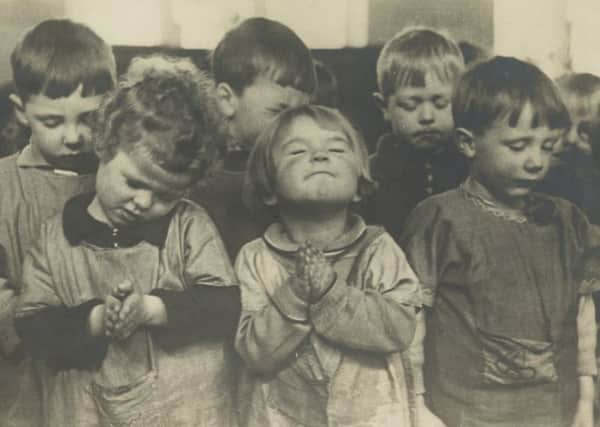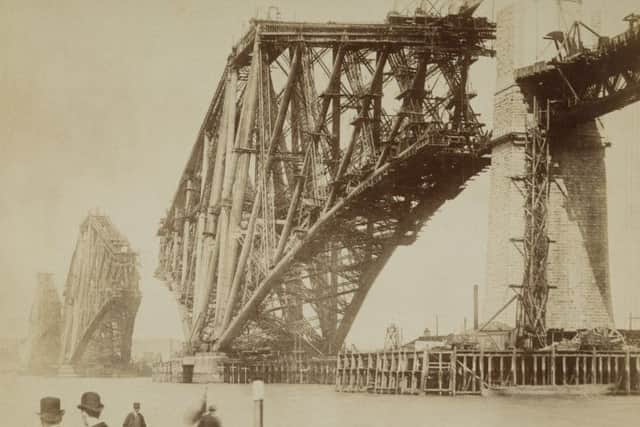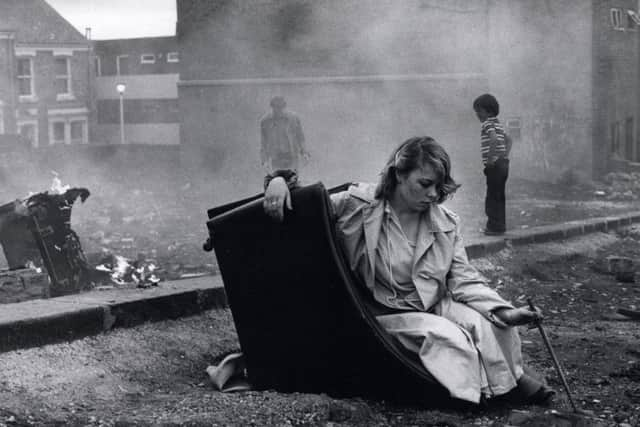Art reviews: Scotland’s Photograph Album | Women Photographers from the AmberSide Collection | Classical Edinburgh


Scotland’s Photograph Album & At The Water’s Edge, Scottish National Portrait Gallery and National Library of Scotland, Edinburgh *****
Women Photographers from the AmberSide Collection, Stills, Edinburgh ****
Classical Edinburgh, City Art Centre, Edinburgh ****
Advertisement
Hide AdAdvertisement
Hide Ad

The tides in the Kyle of Lochalsh are fearsome. Before the Skye Bridge was built, the ferry had to set out almost at right angles to its intended direction of travel to cross the racing waters. But what was it like before the ferry was mechanised? A photograph by George Washington Wilson gives us the answer: an open boat with oars and sail. A covered wagon perched precariously across the beam was no doubt a typical cargo. How the ferry ever crossed the water is hard to imagine. This remarkable photograph documenting a long forgotten, but once matter-of-fact scene of Scottish daily life is just one striking image from more than 14,000 in the MacKinnon Collection, acquired jointly by the National Library and the National Galleries of Scotland and now subject of a two-part exhibition, consisting of a small selection of gems at the NLS and a broader survey at the SNPG. Together they comprise little more than one per cent of the total, but the whole collection will eventually be digitised including images now in albums, the latter often themselves historic.
This photographic treasure trove was collected by Murray Mackinnon. Now retired, he expanded from a chemist’s shop in Dyce to run a chain of photographic shops in Aberdeen. His interest in photography was not simply commercial however. He began to collect as a teenager, sold his vast collection a few years ago and now in turn it has been bought for the nation, and what an acquisition it is. Its thousands of photos are an extraordinary record of Scotland’s past, from the beginnings of photography until around the 1940s. They include recognised masterpieces with work by Hill and Adamson, for instance, or Thomas Annan’s pictures of Glasgow, but like a family album it is the stories it tells that make the collection so fascinating. So many of the pictures by unknown photographers are so good that they would anyway make nonsense of a separate “artistic” category.
One of the earliest images here is by Henry Fox Talbot, pioneer of photography. It is of Abbotsford, Walter Scott’s home, once a place of European pilgrimage. Using Fox Talbot’s calotype method, DO Hill and Robert Adamson were not far behind and pictures by them here include a group of Newhaven fishwives, but then – and this is typical of the richness of the collection – nearby is a wonderfully unexpected image from a slightly later time. Two Newhaven fishwives are standing by, their heavy baskets of fish already shouldered, while a third is struggling with hers, helped by the driver as she gets off a tram. This is not history as it is written in books, but as it was lived. Then again there is a portrait by WK Munro of a younger member of this community of doughty women, the picture tinted to show off the brilliant colours of her striped skirts.
Thomas Annan’s photographs of Glasgow closes are truly beautiful. The urban squalor they portray should be the opposite. The ancient buildings do keep a little of their dignity, but the people he includes add something immeasurable too. Indeed, there are wonderful landscapes, especially among the remarkable postcards, but throughout it is the people that bring it all to life – the people and the children. Children playing in the street in Dundee early last century look as lively and irrepressible as Oor Wullie and his friends.


The images are constantly surprising, too. Here is J Armstrong Drexel in his Bleriot monoplane in 1910, for instance, covering a measured mile above Lanark racecourse at the stunning speed of 75.94 miles an hour. Even more startling is a picture of a bomb exploding during the Glasgow Blitz, the work of an unknown photographer who did not lack courage. There is also a breathtaking picture of the Queen Mary before her launch in 1934, her immense prow towering above a single figure. Children play by the sea with a misty Forth Bridge looming behind them. Unknown Victorians gaze at us from gilded miniature frames. There are pictures of sportsmen and women, of agricultural workers and women making munitions in the First World War. A group of artists is gathered outside a reed-thatched cottage at Cockburn’s Path, their landlady looking on. They are not identified, but surely could be. A key would be even more desirable for the Victoria Group of Eminent Women, a photo-collage of about a hundred women with Queen Victoria at the centre. There are a few former queens, but most of the women, like Florence Nightingale, for instance, seem to be contemporaries. Properly annotated this could be a feminist icon, while a picture of Aberdeen in the 1920s by John Stephen certainly should be an icon for the SNP. The statue of William Wallace stands silhouetted against the misty dawn. His raised arm seems to point the way for a sturdy boy marching purposefully towards the rising sun. The title is Dawn of Light and Liberty.
At Stills, Women Photographers from the AmberSide Collection also includes some powerful images. The Amber collective was established in Newcastle in the late 1960s. The show includes work by nine photographers and several of them worked in and around Newcastle.
Kendal Street, Byker, 1969, by Sirkaa-Liisa Konttinen, for instance, a view of identical rows of houses flanking a long, sloping street, empty but for a single figure, is a classic of its time. A little later, Tisha Murtha documented the unemployed youth of Newcastle in pictures that give her young subjects their full humanity, even in scenes that are otherwise of desperate dereliction. Laura Junka Aikio achieves something similar in Gaza with photographs of people defying their circumstances to swim or picnic by the sea. But if these scenes defy the awfulness of a nearby war, Susan Meiselas is in the thick of civil war in Nicaragua: a woman pushes a handcart laden with a corpse, or people cover their faces against the stench as they pass a funeral pyre lit casually in the street. Grace Robertson offers some relief with pictures of ladies of a certain age enjoying themselves, while in a picture by Diane Arbus of a topless dancer in San Francisco, the corner of a poster of Leonardo’s Last Supper glimpsed on the dressing table opens the story in an unexpected direction.
Advertisement
Hide AdAdvertisement
Hide AdAt Classical Edinburgh at the City Art Centre, photos by Colin McLean of the douce streets and terraces of Georgian Edinburgh make a stark contrast to such images. Contrast the marching facades of Chester Street in McLean’s photo, for instance, with the bleak terraces of Byker. The occasion for this show is the 50th anniversary of the Making of Classical Edinburgh by AJ Youngson, published for the bicentenary of the New Town. Youngson’s text is a classic itself, but so too are the photos by Edwin Smith commissioned to illustrate it. A group of these is included in the show, while McLean has updated them in an equally fine set of pictures of the Georgian city as it is now. It could easily have sunk into dereliction too, but mostly it seems to have survived so far thanks to the likes of Youngson. Even though it is still not safe however. Wine glasses instead of books in Playfair’s great library in Old College is a small, if stinging insult perhaps, and a dark sky above Greek Thomson’s Royal High School hints at the threat that still hangs over it. Elsewhere, the appalling St James development, a.k.a. the Turd, is such an egregious act of civic self-harm you wonder if the council is aware of the heritage left by its predecessors and so eloquently celebrated here in its own art gallery. Duncan Macmillan
Scotland’s Photograph Album until 16 February and At The Water’s Edge until 15 February; Women Photographers from The AmberSide Collection and Classical Edinburgh, both until 8 March 2020